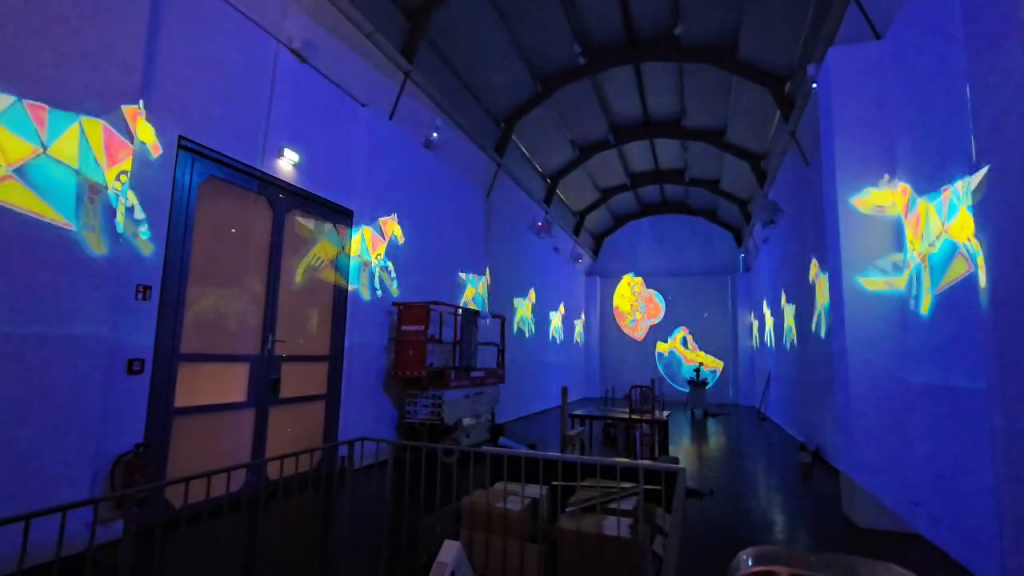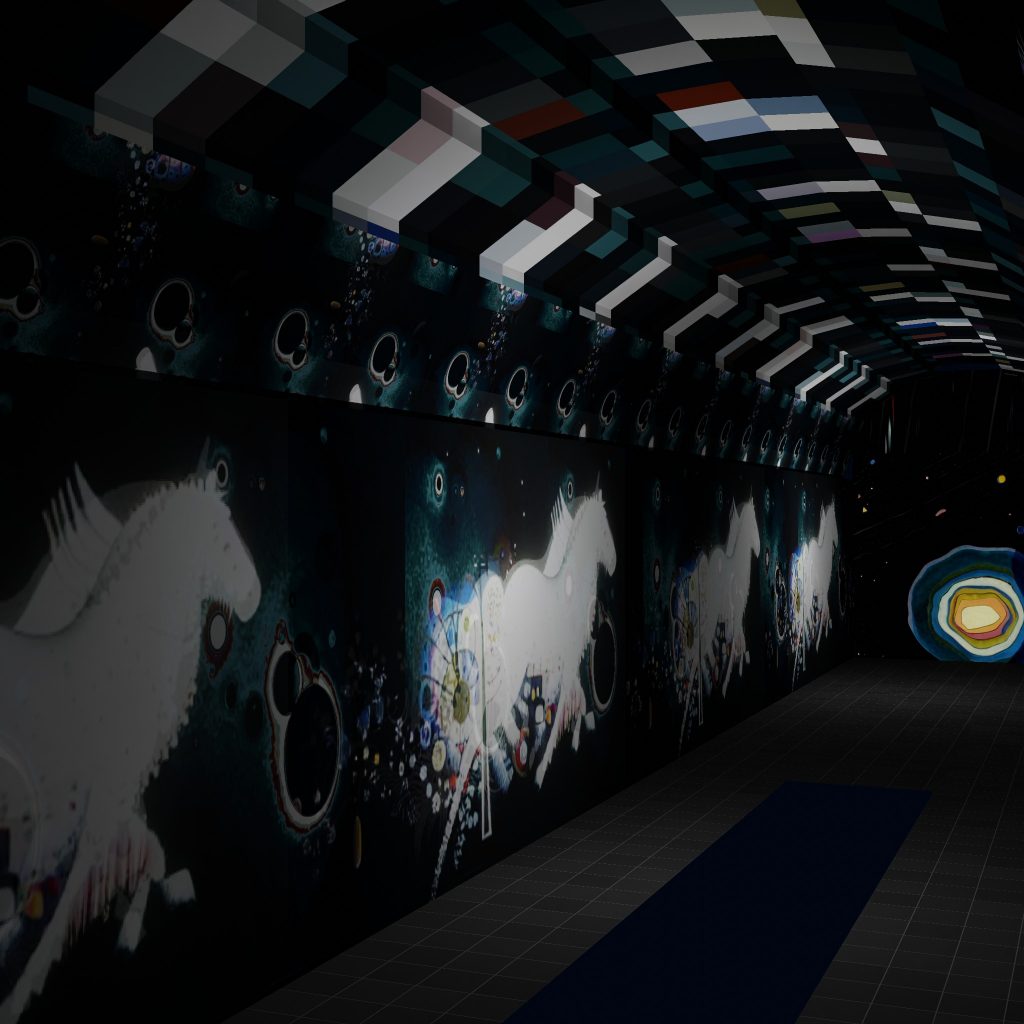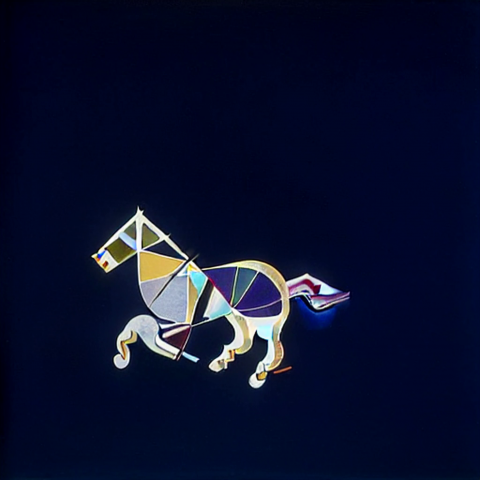The exhibition „Kandinsky’s Kaleidoscope: An immersive experience space for the Élysée Year,“ at the Historical Museum Saar from July 18 to August 31, 2023, was a project in projection mapping. Located in an exhibition hall designed by architect Gottfried Böhm, it was part of the Élysée Year commemorations. With sixteen projectors, the installation created an audiovisual environment by combining visual and auditory elements using generative artificial intelligence, aiming to introduce new aesthetic approaches.
Trailer of „Kandinsky’s Kaleidoskop“
The work was influenced by „Der Blaue Reiter,“ an art movement initiated by Franz Marc and Wassily Kandinsky, which had a significant impact on the development of abstract art and by Kandinsky’s book “Point and Line to Plane” (1926), where the geometrical definition of border can be abstracted to think on the meaningless definition of national borders. Digital media artists Mert Akbal, Jonas Schöner, and Burkhard Detzler created seven abstract expressionist animations. Akbal further explored generative AI methods where first animating geometric shapes—lines, waveforms, circles, triangles—parametrically, followed by processing them through an image-to-image translation technique, Stable Diffusion img2img, with descriptors like „lines, waves, triangles by Wassily Kandinsky.“
Additionally, the project acknowledges Wassily Kandinsky’s synesthetic capability to connect sounds, shapes, and colors. Composer Martin Hennecke used AI technology in an attempt to replicate these connections. The „Scoremaker,“ developed with software developer Benjamin Wolff from the Institute for Software Technology of the German Aerospace Center, processed RGB color data from Kandinsky’s images to create a sound installation. This was complemented by Hennecke’s adaptation and arrangement of orchestral music by Arnold Schönberg, a contemporary of Kandinsky, integrating historical and artistic contexts.

In addition to the original images, this artificial intelligence system is provided with simple words – in this case, „lines, waves, triangles by Wassily Kandinsky.“ This process generates movement compositions that imitate Kandinsky’s style but are unmistakably created by Akbal in terms of composition and animation. The term „semantic rendering“ describes the completion of an image from digital objects in the digital world, where images are created by linking words and their meanings to digital objects.
Within the three works, only two figurative representations can be identified: Eros (Love) and his brother Anteros (Reciprocal Love), depicted as two archers, and repeated depictions of galloping horses. These horses not only pay homage to the art movement „Der Blaue Reiter,“ which dissolved with the outbreak of World War I in 1914 but also serve as a reminder of the eight million animals that lost their lives in the war despite not belonging to any nation. Furthermore, they symbolize the profound transformation of the horse from a working animal to the rise of automobile culture after the war.
Full documentation of „Kandinsky’s Kaleidoskop“

(1) The Élysée Year refers to a commemoration or celebration of the Élysée Treaty. The Élysée Treaty, officially known as the Treaty of Friendship between France and Germany, was signed on January 22, 1963, by President Charles de Gaulle of France and Chancellor Konrad Adenauer of Germany. The treaty aimed to strengthen the relationship and promote cooperation between the two countries after years of historical conflicts. The Élysée Year typically marks a significant anniversary of the treaty and is a time to reflect on the Franco-German friendship and partnership.
(2) The titles are rephrased from Wassily Kandinsky’s book „Point and Line to Plane,“ taken from pages 131, 20, and 127.
